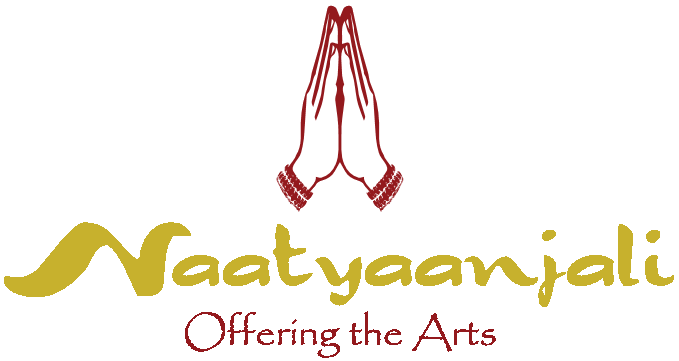Bharathanatyam and the Gods – Origin of Bharathanatyam
As a dancer, I have always pondered about the strong link between the ancient art form Bharathanatyam and the Gods & Goddesses we have in Hinduism. That thought led to the curious exploration into the origin of Bharathanatyam – a divine origin.
Here’s a sharing of my understanding…
As Kali Yuga was approaching, the Devas approached Brahma, the Creator, to create a Veda that would be understood by Sudras. Realising that people could no longer understand the ambiguous scriptures, He agreed and created the Fifth (Panchama) Veda or Natya Veda.
The Natya Veda was a combination of the four existing Vedas –
- Pathya (words) of Rig Veda
- Abhinaya (communicative elements of the body / mime) of Yajur Veda
- Geetham (music and chant) of Sama Veda
- Rasa (vital sentiment and emotional element) of Atharva Veda
Brahma then handed this Veda to Rishi Bharatha Muni who then wrote the Natya Sashtra between 200 AD and 200 BC. The Natya Sashtra is the oldest surviving text which covers stage-design, music, dance, makeup and virtually every aspect of stagecraft. It became the fundamental authority on the technique of classical indian dances.
Bharatha Muni, the Apsaras and the Gandhavas performed for Lord Shiva who then improved and modified Bharatha Muni’s interpretation. He then instructed the science of dance to Thandu Maharishi who developed it further into a Thandava style of dance, the Cosmic Dance of Shiva. Thandava is the symbolism of the dance of Shiva (in the form of Nataraja).
“Also known as the cosmic dancer, He is here the embodiment and manifestation of the eternal energy in five activities (panch-kriya): creation, pouring forth, unfolding; maintenance or duration (sthiti); destruction or taking back (smhara); concealing, veiling, hiding the transcendental essence behind the garb of apparitions (tirobhava); and favoring, bestowing grace through a manifestation that accepts the devotee (anugraha). Shiva is depicted dancing on the dwarfish body of the demon Apasmara purusa, “forgetfulness, loss of memory” called in Tamil Muyalaka – who represents ignorance, the destruction of which brings enlightenment, true wisdom, and release from the bondage of existences.”
– http://en.wikipedia.org/wiki/Bharata_Natyam#cite_note-Nayagam1970-9
Shiva imparted Lasya Natya (the graceful feminine lines and movements) to Parvathi who then passed it on to Usha, the daughter of Banasura. Usha passed this on to the Gopis of Dwaraka who in turn passed it on to the maidens of Sowrashtra.
The Gods and the Goddesses have been passing the art of the heavenly dance through many other human channels and created a number of styles ranging from Odissi to Bharathanatyam.
Having such a divine origin, Bharathanatyam is not an art for entertainment. As it embodies the cosmic relationships and expressions (bhava) for all the worlds, Bharathanatyam is one of the means for spiritual elevation for both the dancer and the audience.
Bharathanatyam was initially performed by dancers-female priests who were known as Devadasis. The devadasi system is a religious practice in parts of southern India, including Andhra Pradesh where parents marry a daughter to a deity or a temple. The devadasis led a strict celibate life and were not allowed to have a family. They performed Dasi Attam, an old version of Bharathanatyam. The devadasi tradition gradually degraded.
Later the kings invited devadasis to perform in the royal courts. They were called Rajanartakis and became royal concubines. The Muslim and then the British colonial rule completely destroyed the devadasi tradition.
The four different well-known styles are
- Pantha Nallur
- Vazhuvoor
- Thanjavur
- Kanchipuram
(Later two styles have vanished)
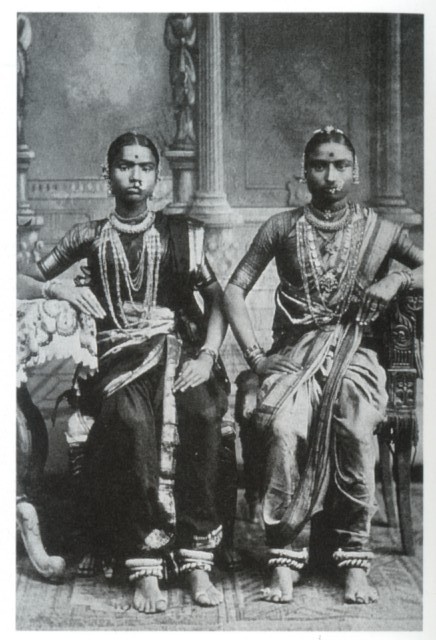 Source: http://upload.wikimedia.org/wikipedia/commons/2/22/Devadasi_1920s.JPG
Source: http://upload.wikimedia.org/wikipedia/commons/2/22/Devadasi_1920s.JPG
In the first half of the 19th century, Tanjore Quartet brothers (Chinniah, Ponniah, Sivanandam and Vadivelu) made efforts to codify Bharathanatyam. They organised all the basic steps into a series of steps called adavus which are like alphabets in a language. This culminated in the dance repertoire to bind the temple performance of dance to an agamic ritual. The dance repertoire and the items to be performed have been codified by the Brothers more than two hundred years ago and is still being followed today. Starting with a devotional hymn to protect the dancer and ward off the evil eye, the repertoire consists of many items like Alarippu, Jatiswaram, Sabdam, Varnam, Padams and usually ends with a Thillana and devotional pieces like Ashtapati, Slokam etc.

Source: http://satvikamshivam.weebly.com/uploads/7/5/8/8/7588908/9528440_orig.png
Rukmini Devi Arundale, the founder of the famed Kalakshetra, revived the status and image of Bharathanatyam. She had learned the Pandanallur style within three years. Though she belonged to the upper-caste, Rukmini Devi advocated the cause of Bharatnatyam, considered as a low and vulgar art during that period.
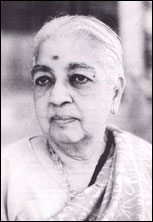
Source: http://www.chennaibest.com/discoverchennai/personalities/Img/rukminidevi2.jpg
Another renowned artist was Tanjore Balasaraswathi who made this style of dancing well known in different parts of India as well as other parts of the world. She introduced the art to the western audiences from the end of 1950s.
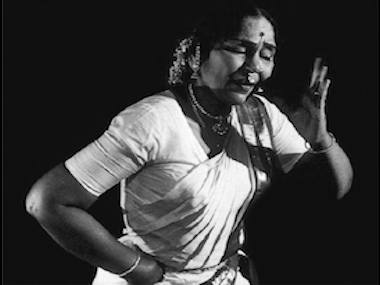
Source: http://s1.firstpost.in/wp-content/uploads/2011/11/Bala380.jpg
Mangudi Dorairaja Iyer had also contributed significantly to this art form. He established the Melattur style of dance in Chennai.
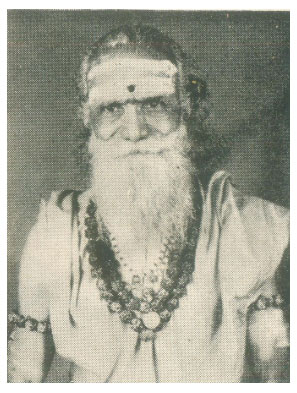
Source: http://sridevinrithyalaya.com/wp-content/uploads/2012/12/Maangudi-Dorairaj-Iyer.jpg
I have only named a few exemplary individuals who have fought very hard to keep this divine art form alive. There were many others who have given their everything to keep this divine art form alive, even till today.
Let’s continue to do our bid to keep this art form alive without tainting it; use it as a means for spiritual elevation!
